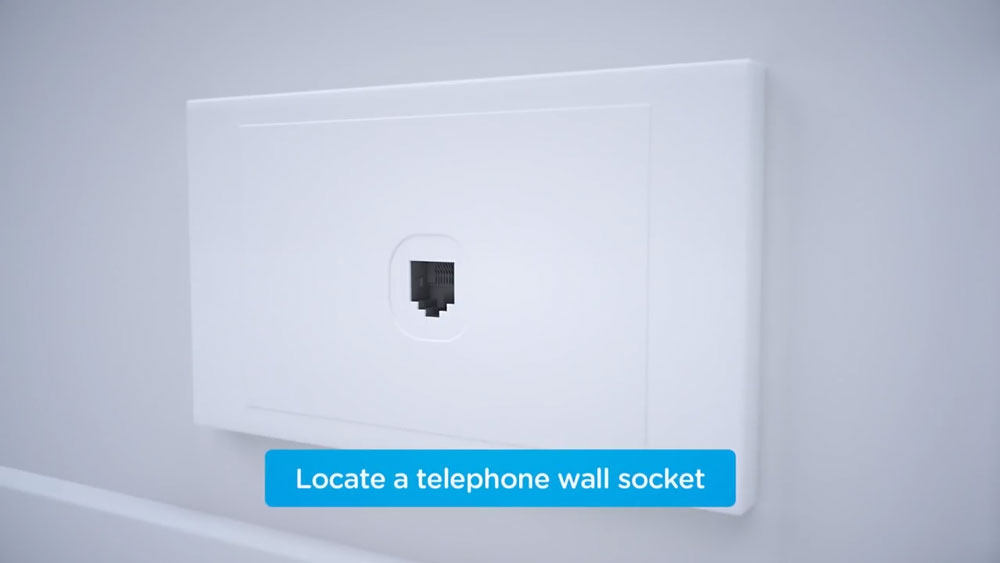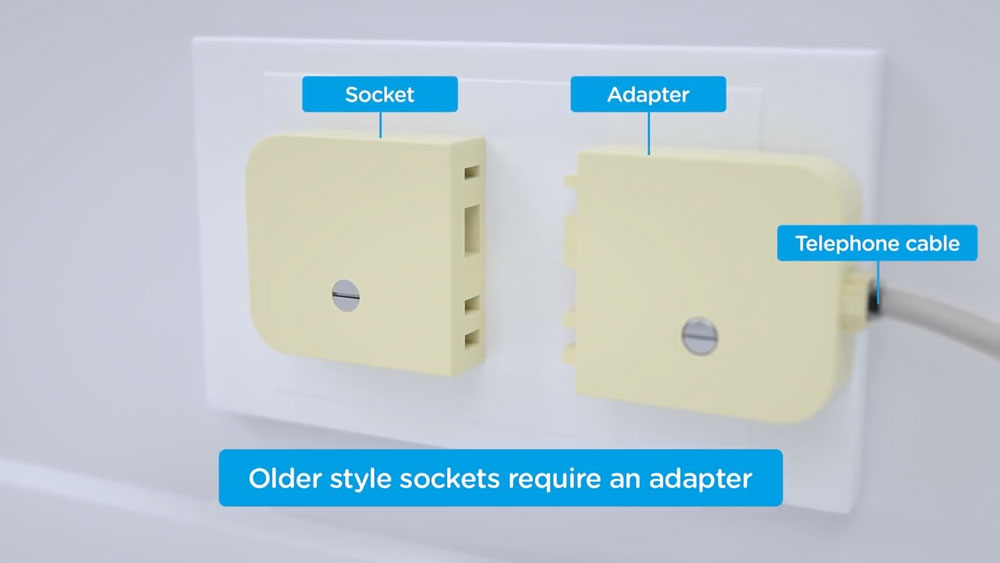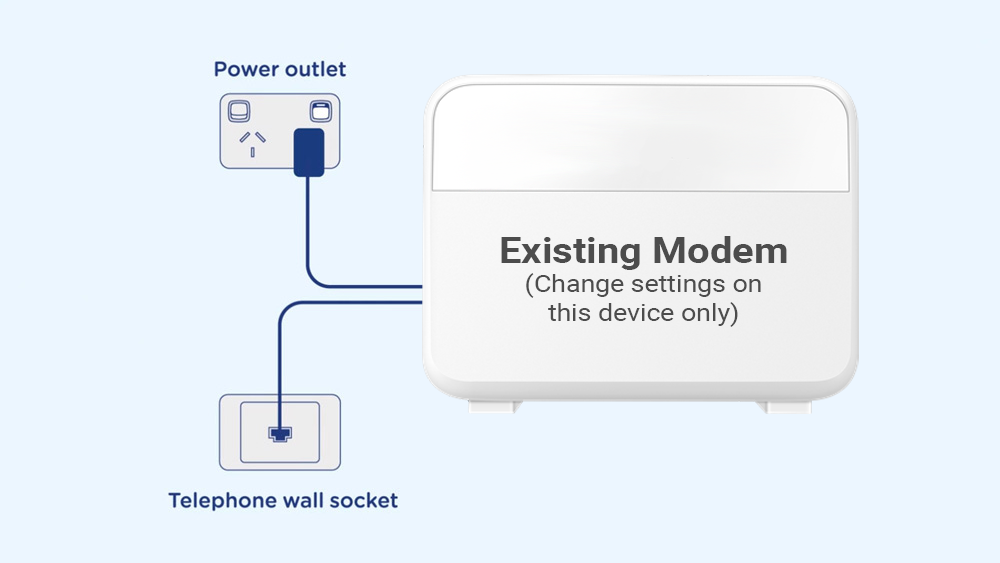1. Locating the connection point
You will need to locate your nbn® connection point, which will be a wall socket in your home. They’re most commonly found in the main living room space or bedrooms, but can sometimes be in the kitchen area. It should look something like the photo below. Make a note of all the sockets in your home, even ones that may be in non-ideal locations such as bedrooms.

If your home has an older style wall socket shown below (typically the plug is a yellow square with 3 prongs), you’ll need to purchase a Jackson adapter that allows you to plug in a modern RJ11 telephone cable. These adapters can be purchased at most electronics and computer stores.

2. Connecting your modem
You now need to plug your new modem into the wall socket. Simply ensure the supplied grey telephone cable is plugged into the wall and to the grey DSL port on the back of your modem. Ensure the power cable is plugged into a power outlet and switched on. Once completed, your setup should look like the below image.

3. Configure your device
Your BYO modem will need to be configured with your new Moose nbn details to work.
- First, ensure the supplied yellow Ethernet cable with your modem (this is usually yellow, blue, grey or white) is plugged from yellow UNI-D1 port on your nbn connection box, into the WAN port on your modem. This WAN port may also be labelled as INTERNET, LAN/WAN or FIBRE depending on the make and model of your modem.
- You will now need to connect your BYO modem to the device. You’ll need a computer, laptop, tablet or smartphone that is connected to your BYO modem via Ethernet or Wi-Fi.
- Once you have connected your device to your BYO modem, open the web browser on your connected device and type in your modem’s default gateway/admin IP address in the address bar. This will be printed on the bottom or back of your modem depending on the make and model. Some of the most common addresses are 192.168.1.1, 192.168.20.1, 10.1.1.1 and 10.0.0.138. The IP gateway address for your modem will typically be printed on the bottom or back of your device.
- Once you have accessed the gateway of your modem, you may see a login page. If there’s a username or login field, the default username will almost always be admin (it may even already be filled in). The default password is typically admin or password.
If you can’t log in with these settings, please check the manufacturer’s website for your BYO modem’s default login settings. If your BYO modem is secondhand or you have used it previously, it may have custom login details set. If you need to, you can factory reset the modem to return it to the default settings.
- From here, it gets a little tricky to offer general advice for all BYO modems. The layout of modem settings pages can vary greatly for each different device depending on the make and model. If you get stuck or it is not clear where you should change your internet settings, you need to check the manufacturer’s website for support information. Ideally, your modem will have a Setup Wizard or Quick Setup section that will run automatically the first time you log in to the settings, or there’ll be a fairly obvious button to launch it.
- The Setup Wizard or Internet Settings section should run you through entering the required connection settings, step by step. The most important settings are the following:
Encapsulation or Connection Type – MUST BE SET TO PPPOE
Connection Mode/Access Type/Service Type – MUST BE SET TO VDSL
This will then allow you to enter your username (sometimes called Login) and password which are supplied in your Moose Mobile welcome email, titled “Welcome to Moose NBN!”. They will be in the following format:
Username: [ACCOUNT NUMBER]@moose.com.au
Password: moose[YEAR OF BIRTH]
- After completing the Setup Wizard or Internet Settings section and saving your settings, give the modemsome time. Some modems reboot automatically after every new configuration, while others simply need a few minutes to apply the settings.
Take a look at the lights on your modem. Most should now be green, blue, purple or another “positive” colour. Many modems have lights that flash to indicate connection activity, so you shouldn’t be concerned if any lights are flashing unless the manufacturer’s support information specifically advises that flashing lights indicate a problem.
- Hop on one of your computers or Wi-Fi devices and try to visit a website. If it works, your Moose nbn internet is up and running. If you have issues connecting, please contact us on 1300 566 673 75 for further troubleshooting.